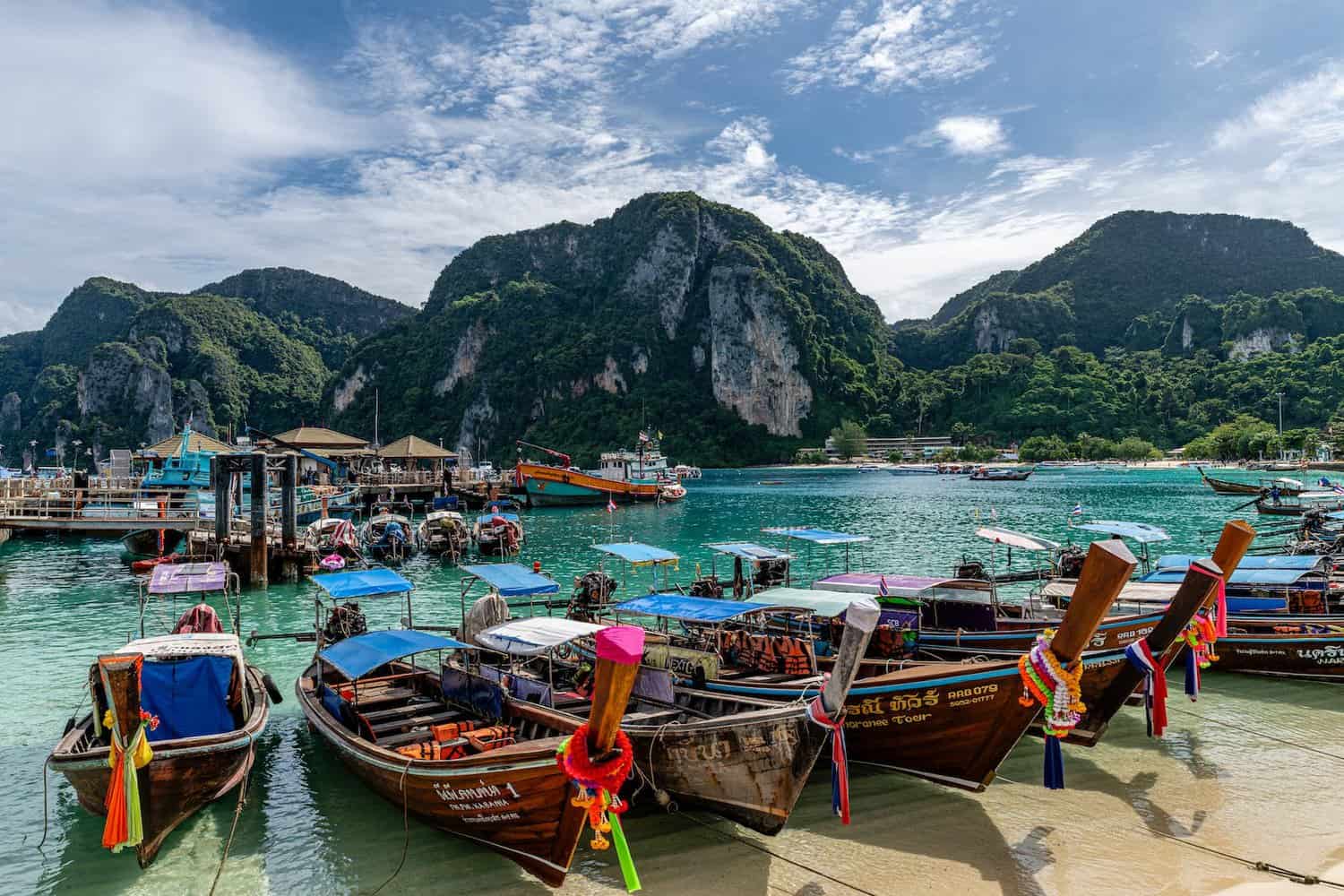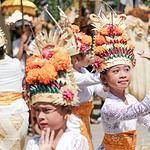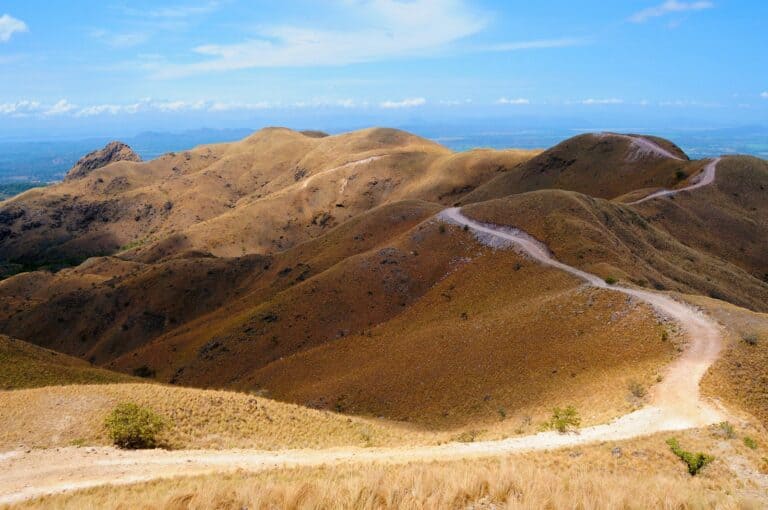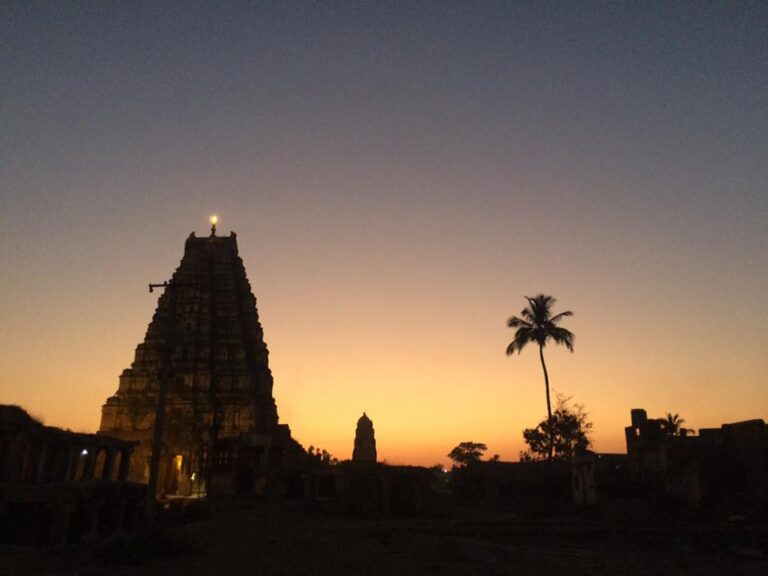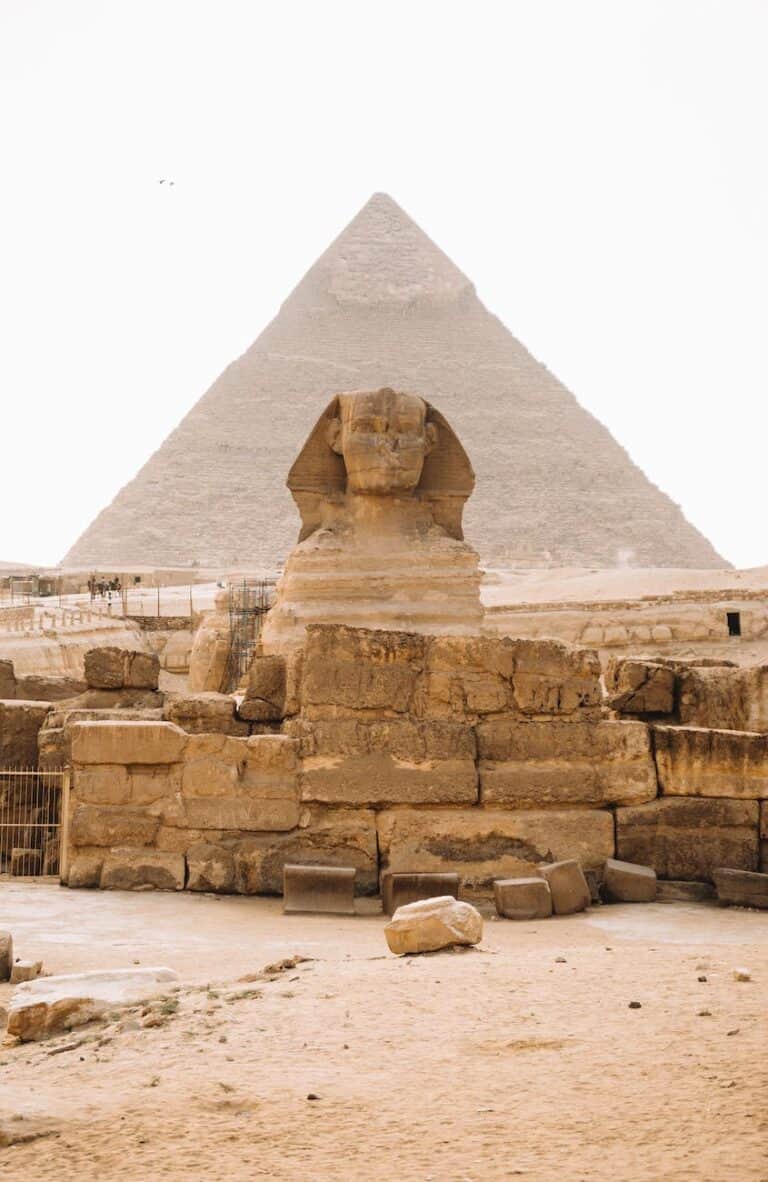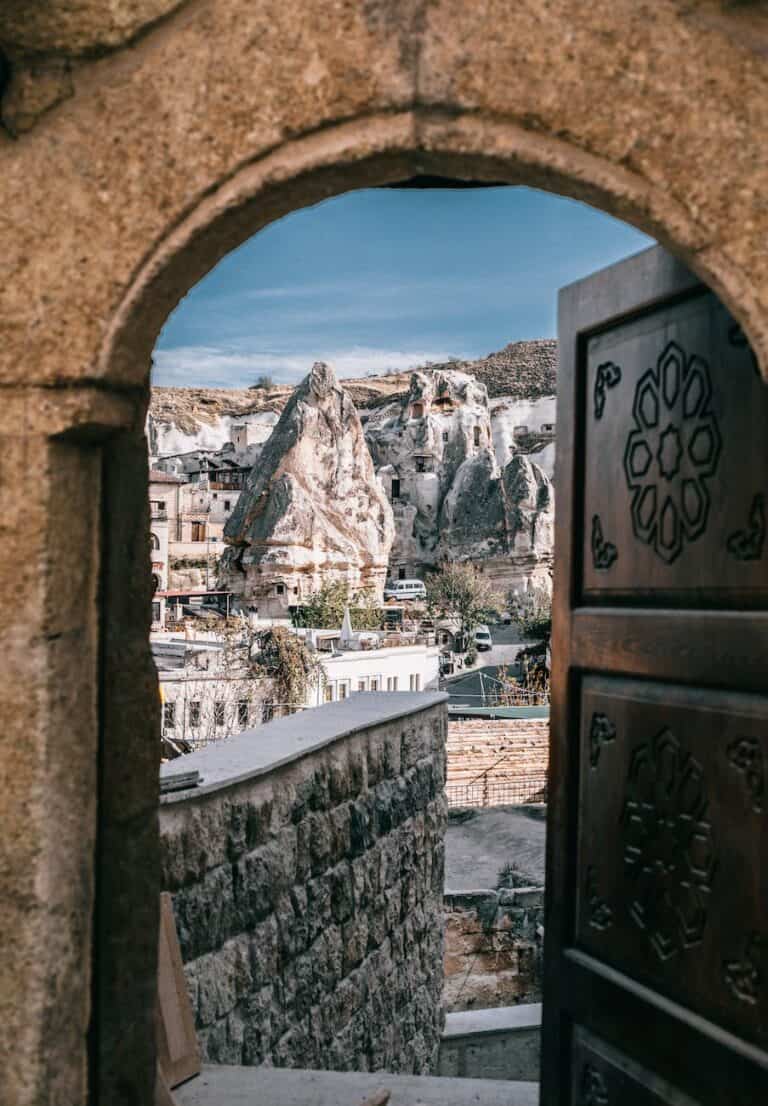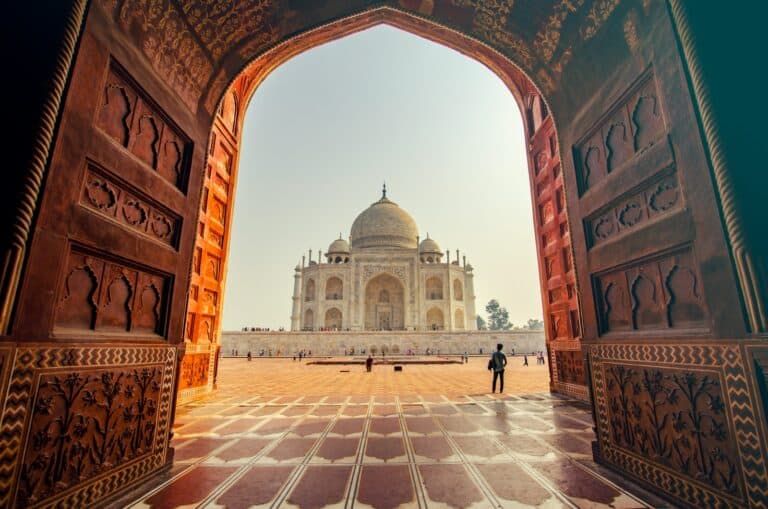Bali vs Thailand: Complete Guide to the Two Competing Paradises!
Are you torn between Bali or Thailand for your upcoming Southeast Asian adventure? Look no further; this guide aims to provide an honest comparison of the two popular destinations, considering the latest prices and travel trends.
Both Bali and Thailand, nestled in the heart of Southeast Asia, boast stunning landscapes, crystal-clear waters, and a variety of cultural experiences. While they share similarities, each destination possesses its unique charm and attractions.
After spending over two months in Thailand and more than six months in Bali, I’ve understood the struggle many face when deciding between these two popular travel destinations!
In this post, we’ll delve into the similarities and distinctions between Bali and Thailand, covering aspects such as costs, weather, activities, and more, helping you make an informed decision for your next exotic getaway.
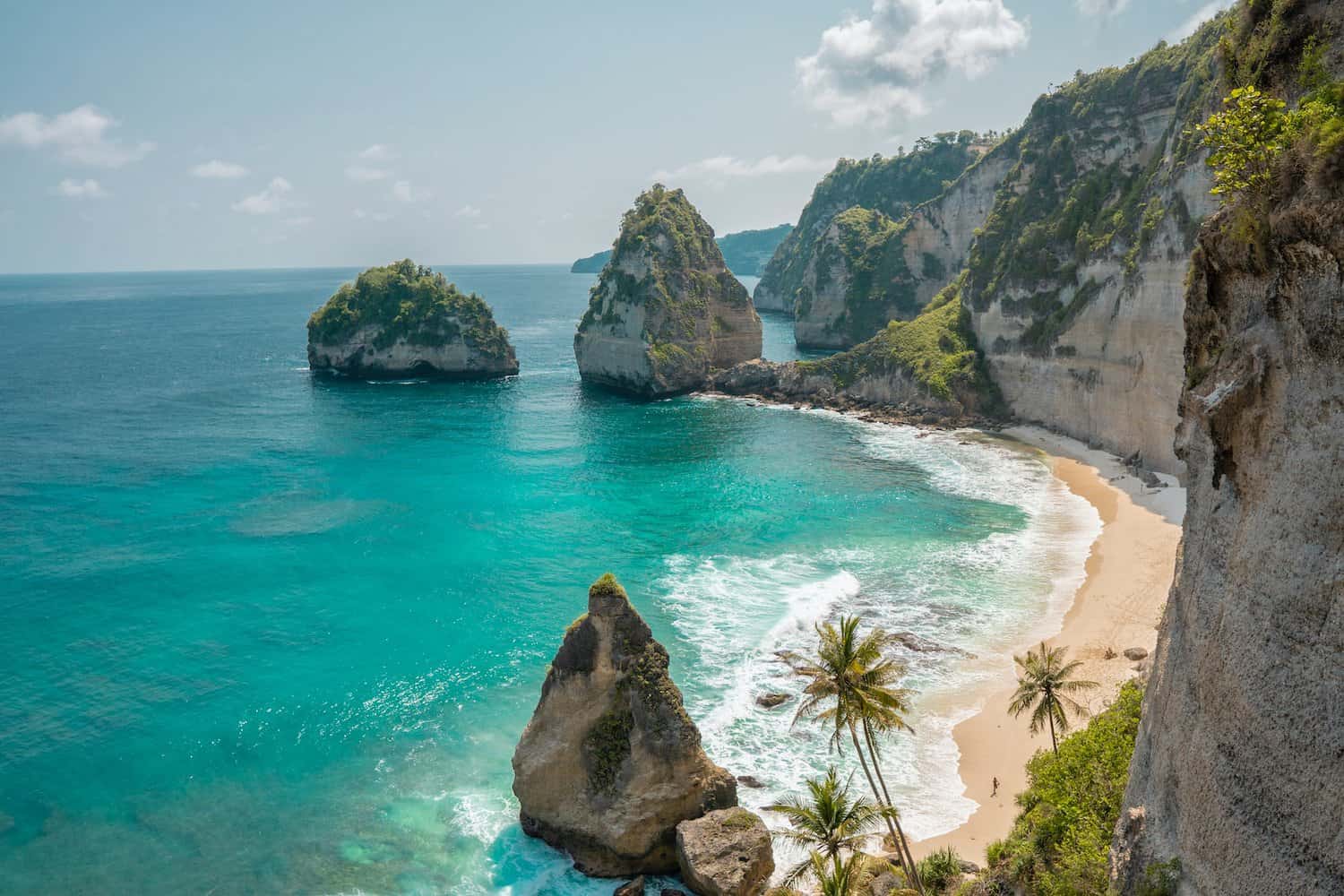
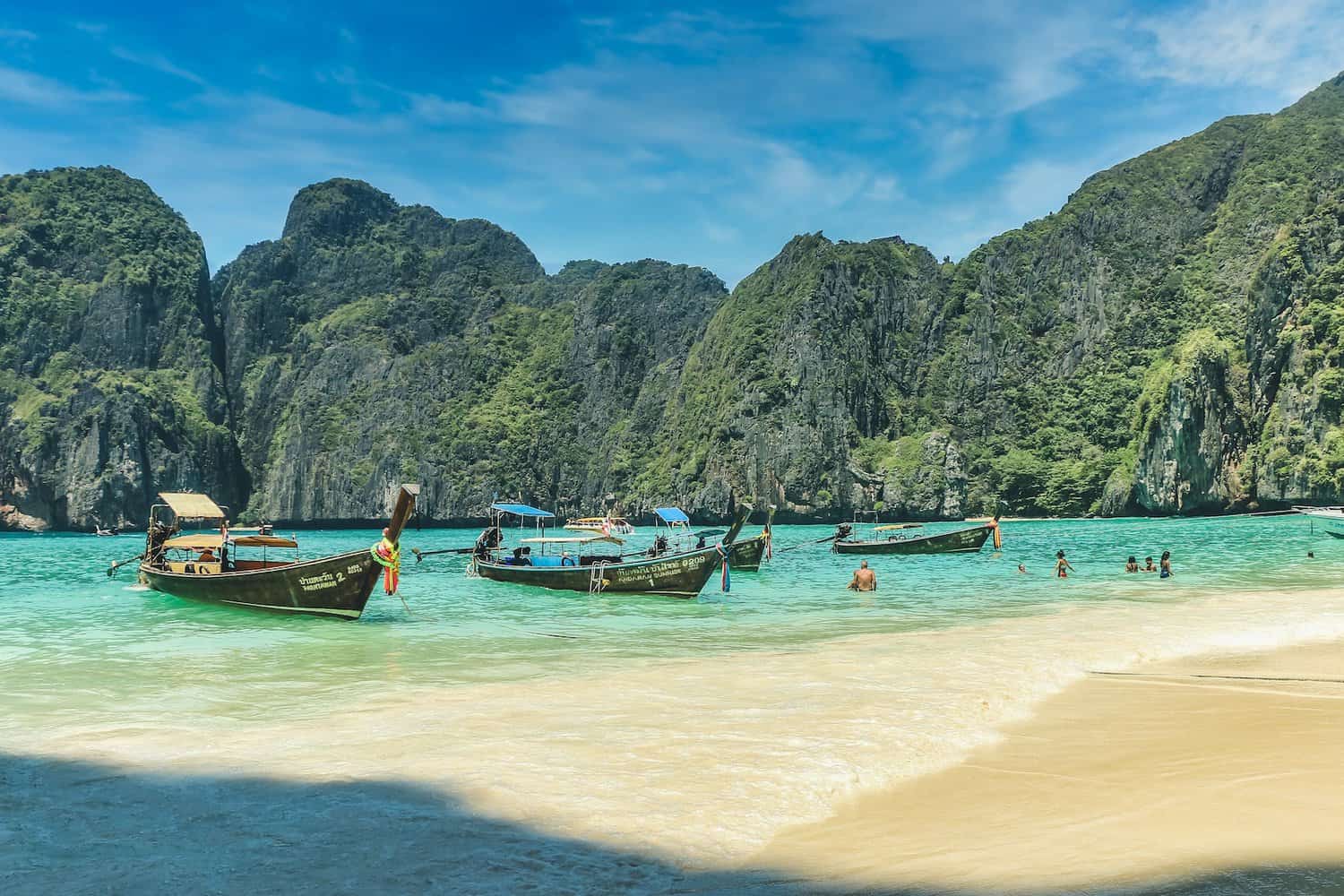
Bali vs. Thailand: Which Destination Is Right for You?
Choosing between Bali and Thailand can be challenging, as both offer incredible experiences. Your decision may hinge on factors such as budget and preferred activities.
Whether you opt for Bali or Thailand, you’ll encounter breathtaking palm-fringed beaches and azure waters. While the islands share similarities, they differ in terms of cost and cultural experiences.
Here’s everything you need to know when planning your trip to Bali or Thailand.
Table of Contents
See also my Comprehensive guides: my 3-week Bali Itinerary and my 1-month Thailand Itinerary!
Bali, celebrated for its spiritual essence, welcomes visitors with diverse landscapes. The bustling yet charming cities feel like large villages without a skyscraper in sight, providing a grounded and spiritual experience.
Meanwhile, Thailand also exudes spirituality but with a different vibe than Bali. The sheer size of Thailand offers a broader range of choices compared to the relatively more minor Bali. While unique destinations in Thailand may be farther apart, the country compensates with an array of options, each with its distinct charm.
To help you decide, let’s break down key aspects and compare similar places in both destinations, making it easier for you to choose the one that aligns better with your preferences and travel goals.
Key Differences Between Bali and Thailand
If you’re grappling with the decision to visit either Bali or Thailand, understanding key differences can guide your choice, especially considering the latest cost trends.
Costs & Prices in Bali & Thailand
Comparing the costs of Bali vs. Thailand may seem daunting, as both destinations can be pricey. However, discerning the price variations is crucial for making an informed decision.
Generally, Bali is more budget-friendly compared to Thailand. This is partly due to the luxurious development in parts of Thailand, making it more expensive. Many travelers now view Bali as an excellent alternative to the higher costs associated with certain areas in Thailand.
Both destinations can become costly rapidly when factoring in expenses like flights, accommodations, food, and activities. For those seeking a more economical option, Bali proves to be a wise choice.
Accommodations and flights constitute the major expenses on both islands. In Bali, accommodations are generally more affordable, offering a range of options from budget to luxury. Conversely, Thailand, especially in certain regions, may have higher accommodation costs, particularly for luxury resorts.
Here’s an approximate breakdown for a week-long trip to each destination:
Bali:
- Flights: $500-$1,500 (depending on departure location)
- Accommodations: $800-$2,000
- Food: $150-$300
- Activities: $100-$300
- Transportation: $50-$150
- Miscellaneous: $50-$200
Thailand:
- Flights: $800-$2,000 (depending on departure location)
- Accommodations: $1,200-$3,500
- Food: $200-$400
- Activities: $150-$400
- Transportation: $80-$200
- Miscellaneous: $50-$250
Weather: Bali Vs Thailand
One of the highlights of visiting Bali or Thailand is the consistently beautiful year-round weather, offering warm temperatures and abundant sunshine. Both destinations, located in the Southern Hemisphere, experience winters from June to September and summers from December to March.
With their close proximity in the Southern Pacific Ocean, Bali and Thailand share fairly similar weather patterns.
Bali:
In Bali, temperatures rarely drop below 70°F, with the cold season occurring from June to October, showcasing average lows around 70°F and highs around 80°F. The warm season spans from December to April, with temperatures ranging from 75°F to 85°F. Summer in Fiji brings the most rain and the highest risk of tropical cyclones.
Thailand:
As for Thailand, the weather is quite similar, with less variance in temperatures. Average lows hover around 75°F year-round, and average highs are around 85°F throughout the year. The rainiest season is from November to April.
Fortunately, both destinations are outside the region for most natural disasters, making cyclones and tsunamis rare occurrences. However, tidal waves resulting from earthquakes along the Pacific Coast can be experienced on certain islands
Bali vs Thailand: Comparing Beaches & Locations
Bali’s Tropical Paradise vs. Thailand’s Diverse Landscapes
Bali: Tropical Oasis of Contrasts:
Bali’s landscapes paint a postcard-worthy picture, featuring lush rice terraces in Tegallalang and pristine beaches in Uluwatu and Nusa Dua.
This tropical retreat offers diverse experiences within a short span—enabling a transition from the magnificent cliff beaches of Uluwatu to the dense jungle in the island’s centre, like Ubud, within just 3 hours. Being a volcanic island, Bali adds a unique touch, allowing you to witness extraordinary sunrises and sunsets over volcanic backdrops.
It’s worth noting that most of the beaches on the west side of Bali aren’t great for swimming due to big surf breaks. If you want a good swimming beach with white sand, then Nusa Dua is one of your best options.
One notable aspect is the diversity of Bali’s beaches. While the black sand might be prevalent due to volcanic origins, the island’s trash issue requires conscious exploration for cleaner shores. Specific destinations like the tranquil Padang Padang Beach or the vibrant Seminyak Beach showcase Bali’s range, each with charm.
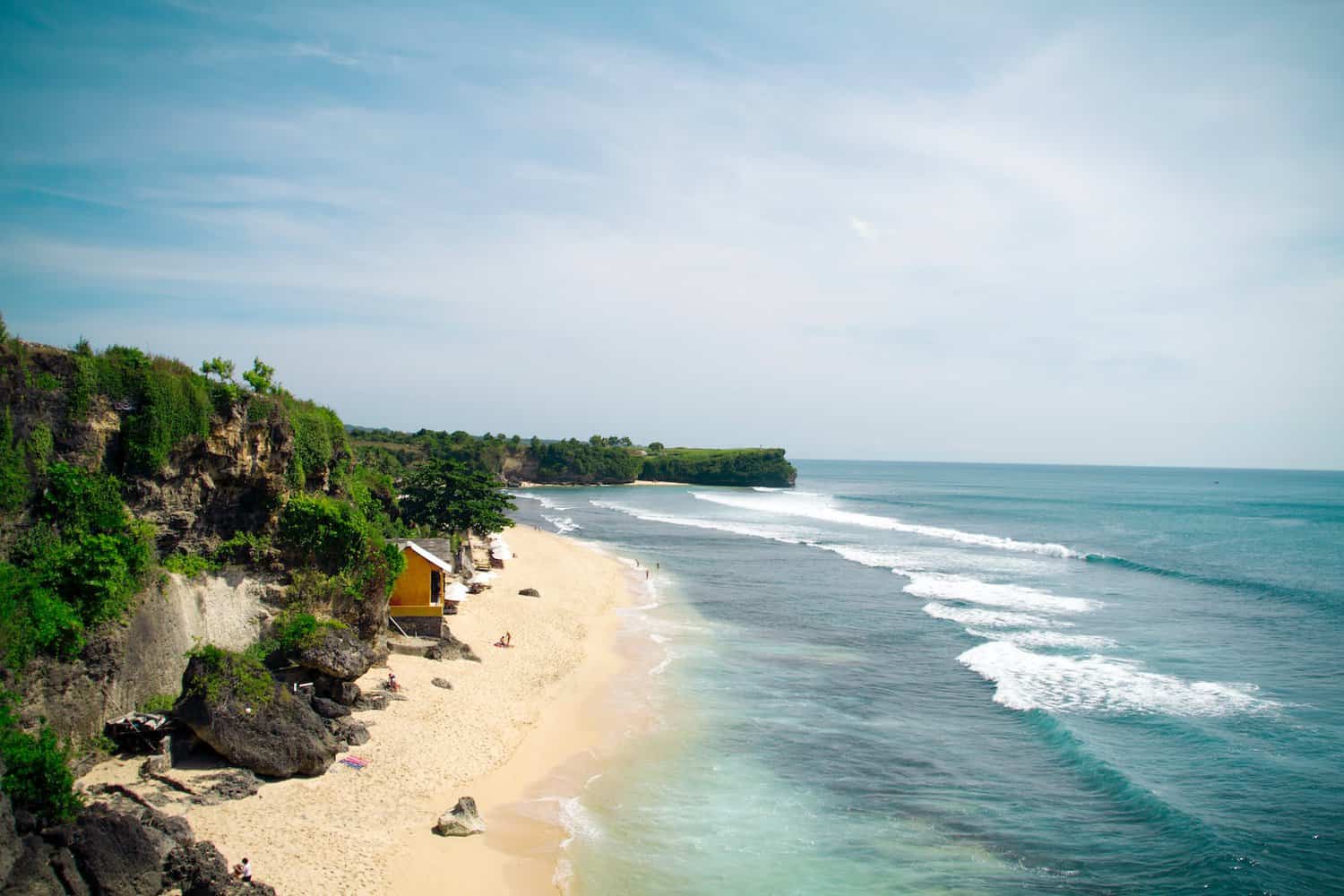
Short on time? Check out my Ultimate 5-Days in Bali Itinerary!
Thailand: Geographical Marvels and Pristine Shores
Thailand’s geographical tapestry is a marvel, encompassing mountainous regions like Chiang Mai, stunning beaches in Railay, and the iconic Phi Phi Islands.
The overall quality of Thailand’s beaches tends to surpass Bali, as the latter faces challenges with black sand and environmental issues. Thailand’s abundant and pristine beaches, including Railay Beach and Phi Phi’s Maya Bay, provide ample options for seaside exploration.
In Thailand, the diversity extends beyond beaches. Chiang Mai, nestled in the cool mountain ranges of the north, stands out as a cultural hub with its ancient temples and vibrant markets. The bustling city of Bangkok, the serene beauty of Phuket’s Patong Beach, and the tranquil Phi Phi Islands collectively offer a dynamic blend for those inclined towards exploration.
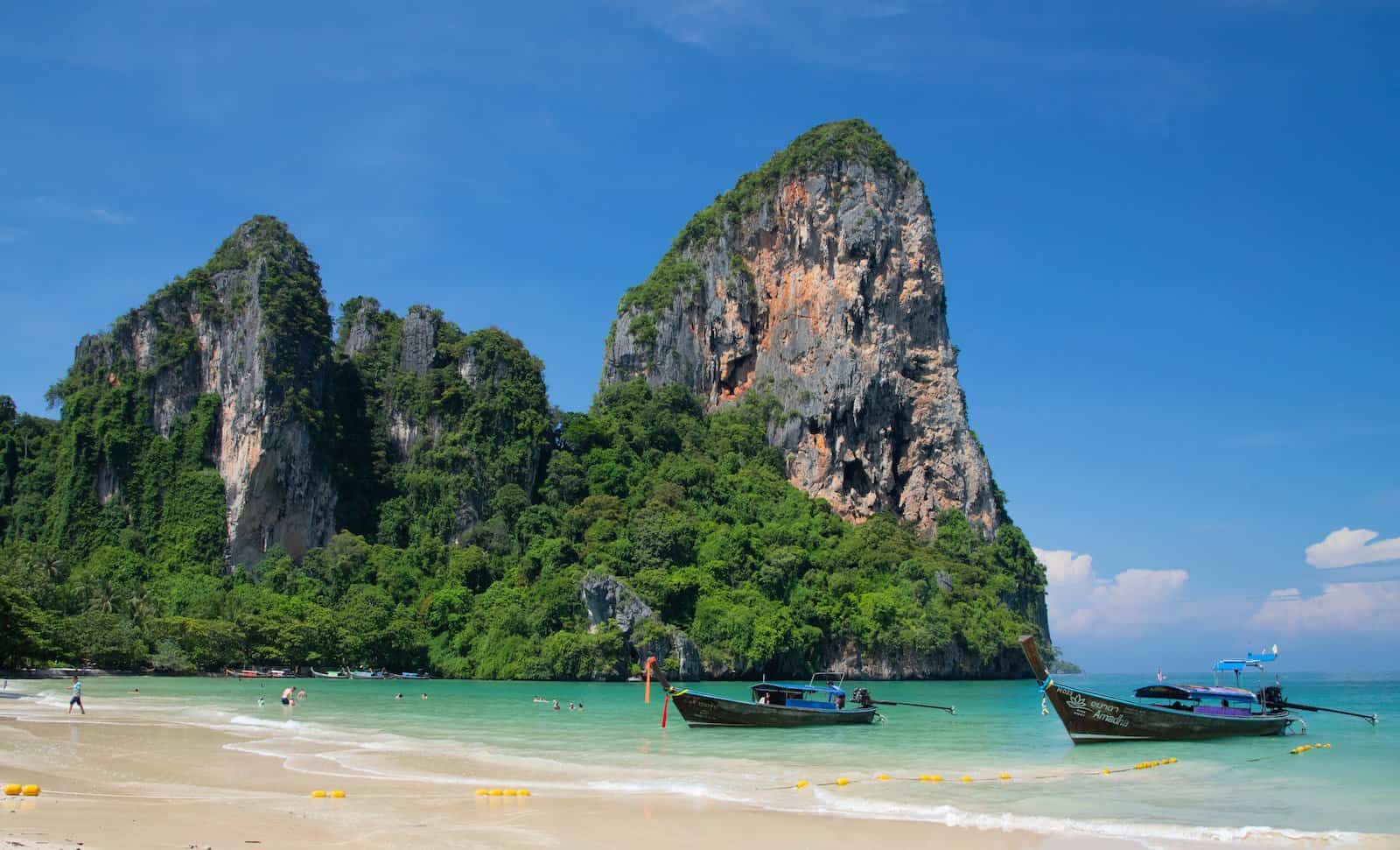
Summary: Bali charms with its range from lush jungles to volcanic shores. However, the island grapples with environmental challenges, notably visible in certain areas. Conversely, Thailand’s geographical diversity extends from mountainous terrains to pristine beaches. The overall quality of Thailand’s beaches tends to surpass Bali, and the choice of islands to explore is much faster.
Bali vs Thailand: A Culinary Odyssey
Bali’s Comforting, Hearty Meals vs Thailand’s Fresh and Vibrant Pallete.
Bali: A Gastronomic Haven with Local Delights
Bali’s culinary scene is a vibrant tapestry of flavours rooted in the island’s rich agricultural bounty and cultural diversity. They tend to use a lot of oil and fried food in Indonesia compared to the fresher tastes of Thai cuisine.
Local delights, such as Nasi Camour (Rice Buffet Selection) Nasi Goreng (fried rice), Babi Guling (suckling pig), and Bebek Betutu (slow-cooked duck), showcase the depth of Balinese cuisine. Using aromatic spices like lemongrass, ginger, and turmeric adds a distinctive taste to dishes. Bali caters to vegetarians with options like Gado-Gado (vegetable salad with peanut sauce) and Lawar (a traditional mix containing finely chopped meat or fish, grated coconut, and rich herbs).
Accessibility for Dietary Preferences: Bali is generally accessible for vegetarians, offering a variety of plant-based dishes. Ubud, in particular, is a haven for health-conscious and vegetarian travellers, with many cafes and restaurants providing diverse vegetarian and vegan options.
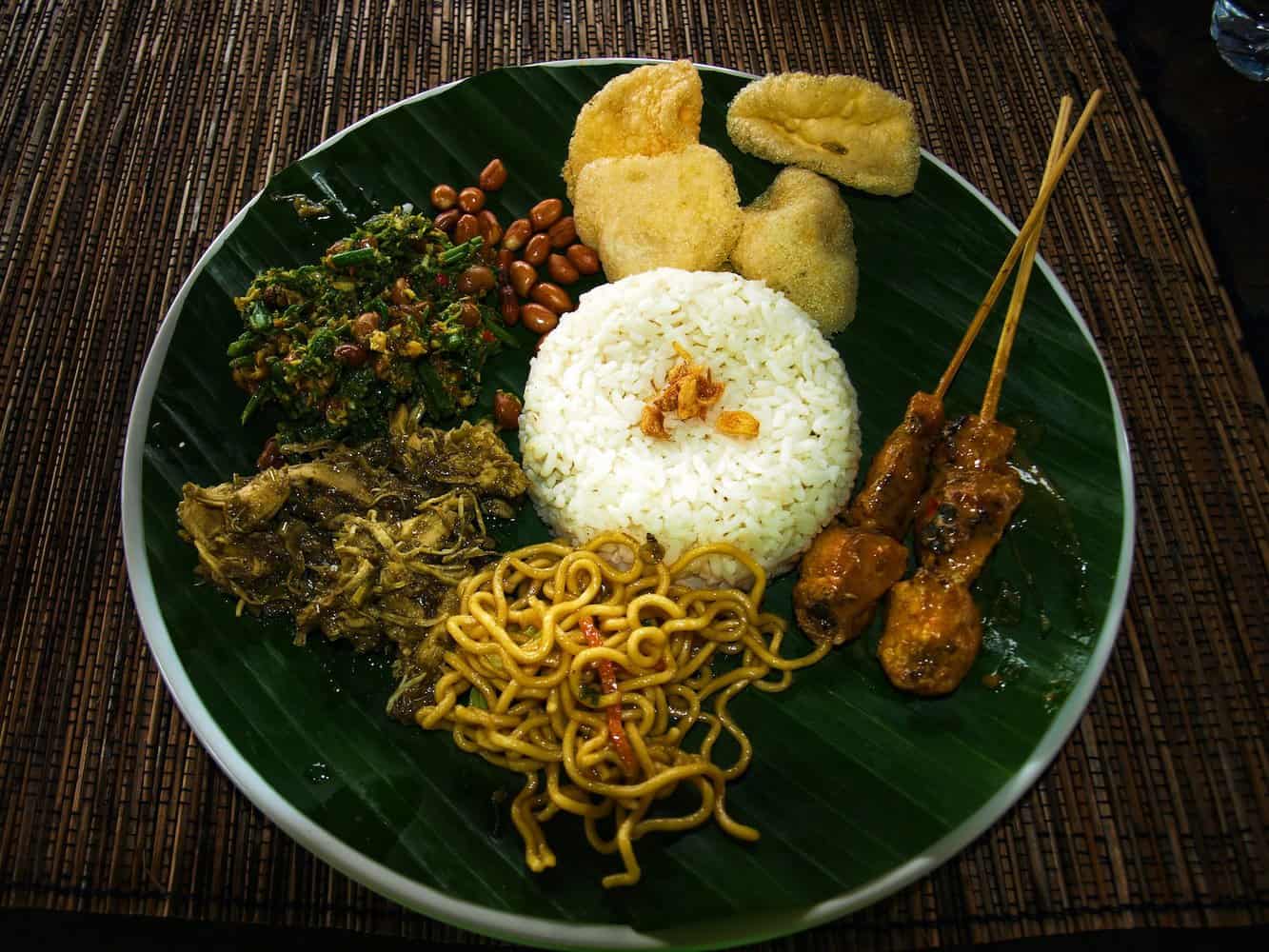
Thailand: A Symphony of Spices and Street Eats
Thai cuisine is renowned worldwide for its blend of sweet, sour, salty, and spicy flavours. Signature dishes like Pad Thai, Tom Yum Goong (spicy shrimp soup), and Green Curry tantalise the taste buds. Street food is an integral part of Thai culinary culture, offering an array of delectable bites such as Som Tum (papaya salad) and Khao Pad (fried rice). Thailand accommodates diverse dietary preferences, with many dishes adaptable to vegetarian or vegan requirements.
Accessibility for Dietary Preferences: Thailand is generally accommodating to various dietary preferences. While traditional Thai cuisine includes meat and fish, vegetarian and vegan options are widely available, especially in tourist areas and urban centres.
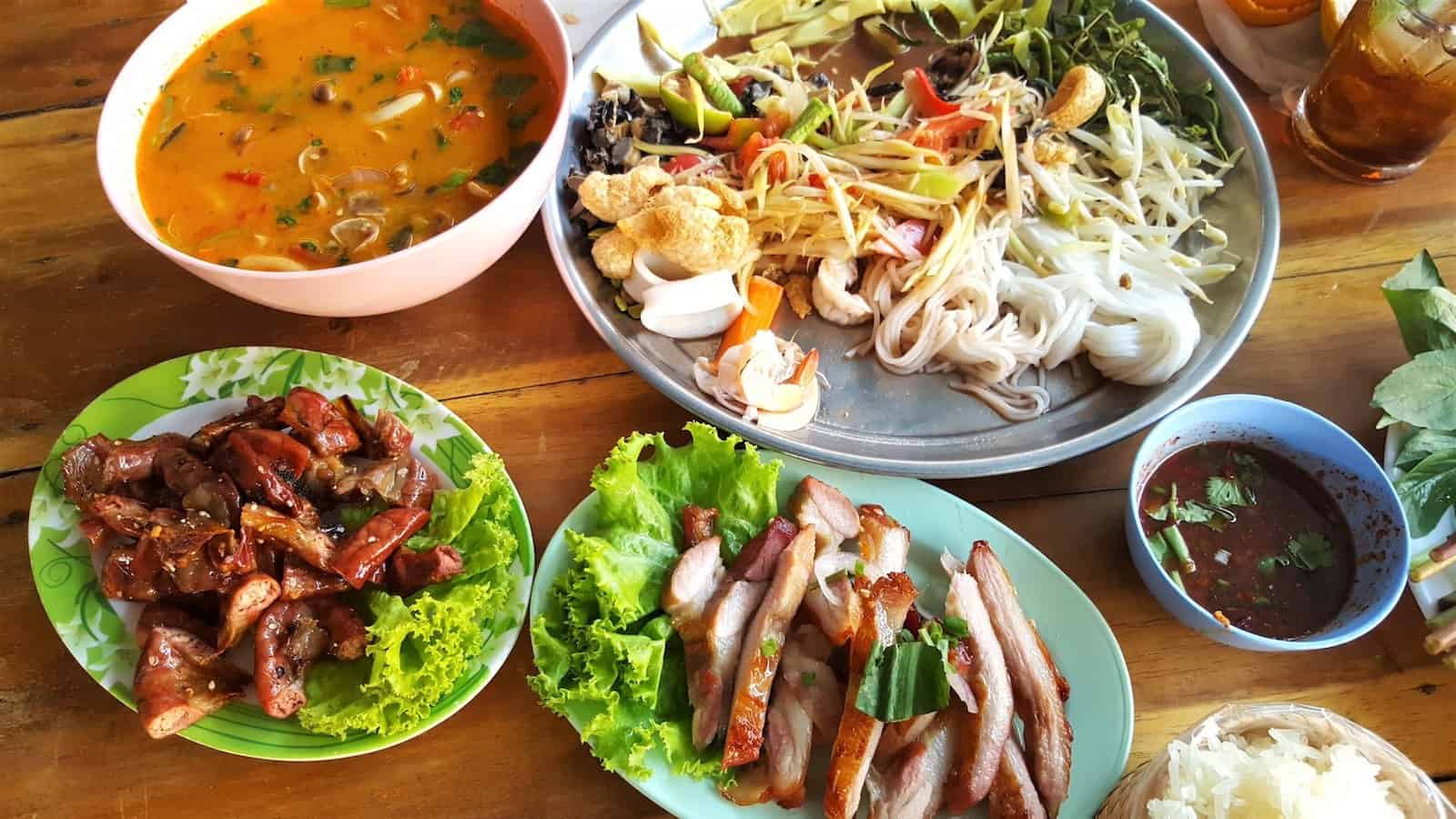
Summary: Balinese cuisine often features slow-cooked dishes emphasising local spices, creating a more subdued but nuanced flavour profile. The use of fresh herbs and spices reflects the island’s agricultural abundance. Thai cuisine is characterised by bold, vibrant flavours with a perfect balance of sour, sweet, salty, and spicy notes. Street food is significant, offering a quick and flavoursome culinary experience.
Bali vs Thailand: Navigating Transport
Balinese limited yet charming transport & Thailand’s expansive and well-connected routes.
Balinese Transport:
In Bali, the ubiquitous scooter symbolises local transport, offering an adventurous and flexible way to explore the island’s winding roads and lush landscapes. Renting a moped or motorbike is a popular choice for the intrepid traveller, providing the freedom to discover hidden gems and remote villages.
Additionally, Bemos, small vans or minivans, serve as a budget-friendly option for short-distance travel. However, the reliability of schedules can vary, as Bemos may adhere to flexible timetables.
Public Transport in Bali: It’s important to note that public buses do not exist in Bali. You cannot fly from the south to the north of the island or get a train, so to explore Bali, you must be happy to sit in cars for long periods of time. Tourists often rely on private transportation options such as hire cars or drivers for more extensive journeys. Taxis and ride-sharing apps are available in urban areas. Apps like Grab and Gojek are essential!
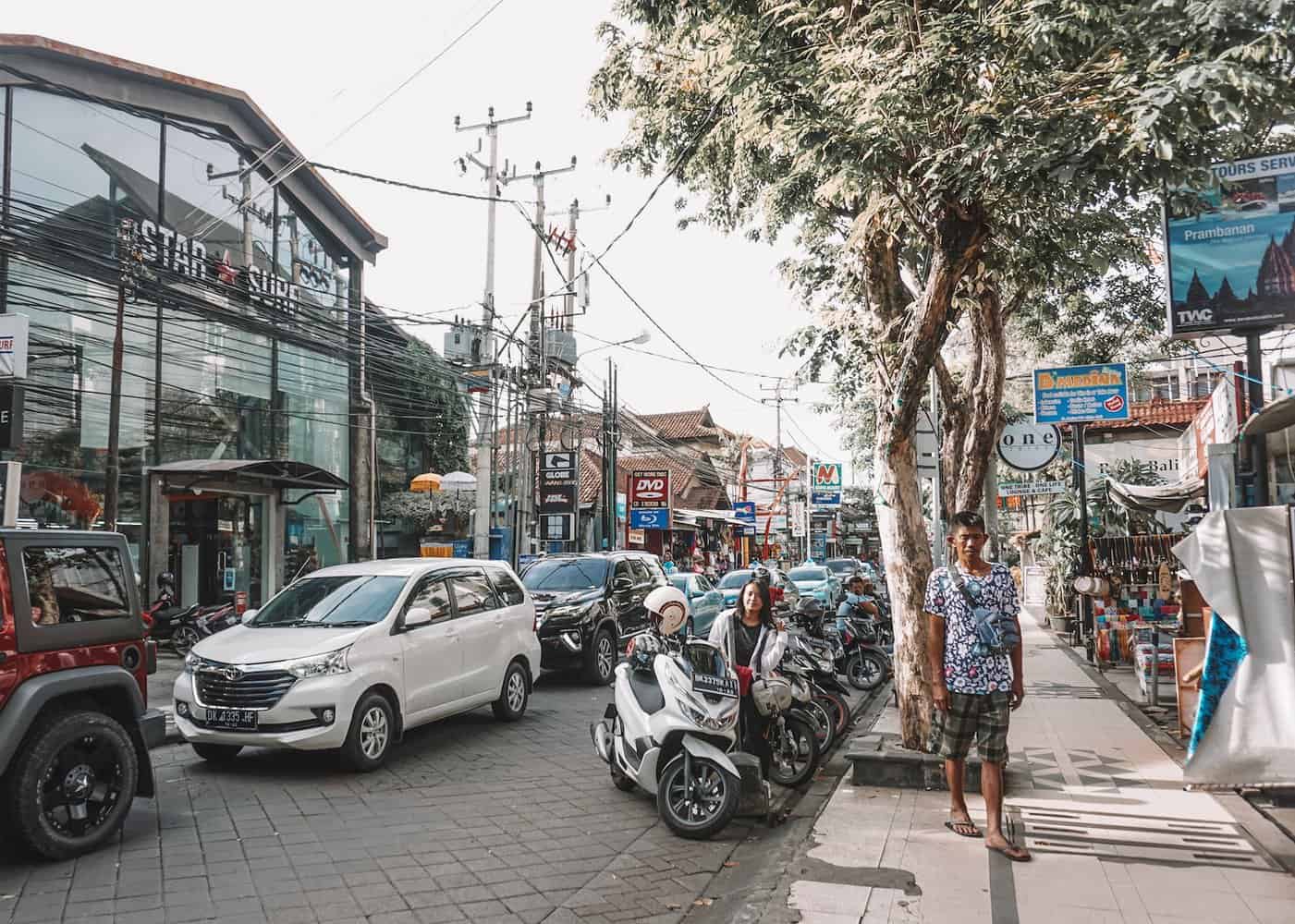
Thailand’s Local Transport:
In Thailand, the iconic Tuk-Tuk is synonymous with local transport, especially in bustling cities like Bangkok. These three-wheeled vehicles provide a lively and efficient way to navigate crowded streets. Taxis are also prevalent, equipped with meters in urban areas for a convenient and standardised fare system. The well-connected BTS Skytrain and MRT subway systems offer a fast and reliable public transportation option in major cities. Thailand’s efficient rail network is another excellent choice for longer journeys, providing a comfortable and scenic experience.
Public Transport in Thailand: Thailand’s public transport is diverse, with buses, trains, and boats connecting various regions. The BTS Skytrain and MRT subway systems are efficient in urban areas. Moreover, Thailand boasts a well-developed air network, making flying between cities feasible and time-efficient. Trains and overnight buses are common, offering comfortable alternatives for longer trips.
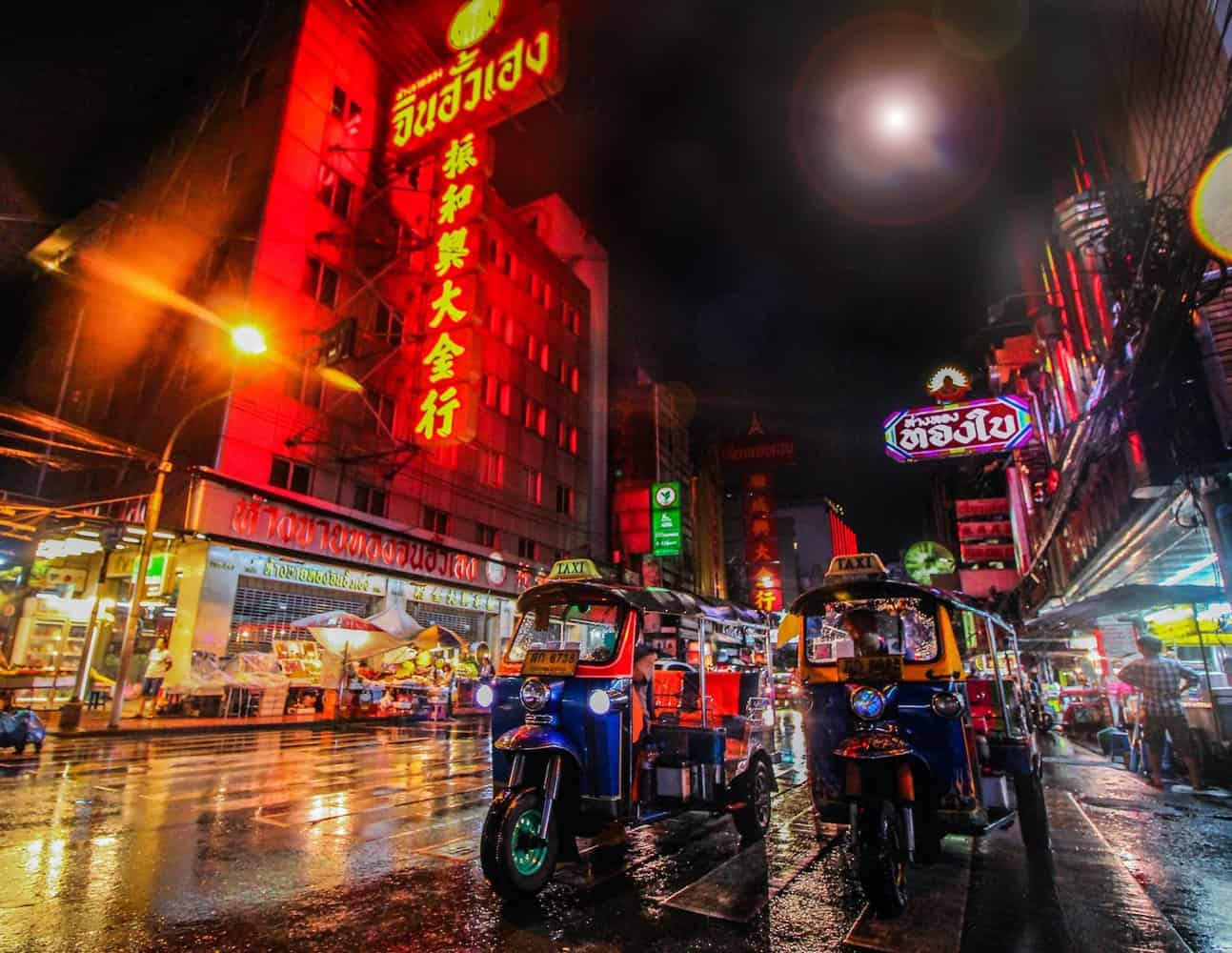
Summary: Navigating Bali’s winding roads on a scooter allows for spontaneous exploration. In the traditional sense, public transport is not a widespread option in Bali, and private cars or taxis are the primary modes of transportation. Thailand’s diverse transport options cater to different preferences, city tuk tuks and scenic train journeys. The availability of flying and overnight buses makes exploring various regions of Thailand convenient and accessible.
Bali vs Thailand: Cultural Exploration
Bali’s Intimate Spirituality vs. Thailand’s Grand Heritage
Bali: A Sanctuary of Raw Spirituality
The Balinese deeply connect with their customs daily, creating an atmosphere of constant reverence. Every day, you will see people laying out their Canang Sari (offerings) and attending temples, ceremonies, and street parades. You feel very intimate with the spirituality in Bali as you see it practised everywhere you go.
In contrast to Thailand, Bali’s temples are relatively understated, resembling more like shrines for the daily use of locals rather than grand architectural statements.
Check out my post on authentic spiritual things do in Bali!
Culturally, Bali’s celebrations often involve colourful processions and traditional dances. The Balinese New Year, Nyepi, is a unique experience where the island shuts down for a day of silence, meditation, and self-reflection.
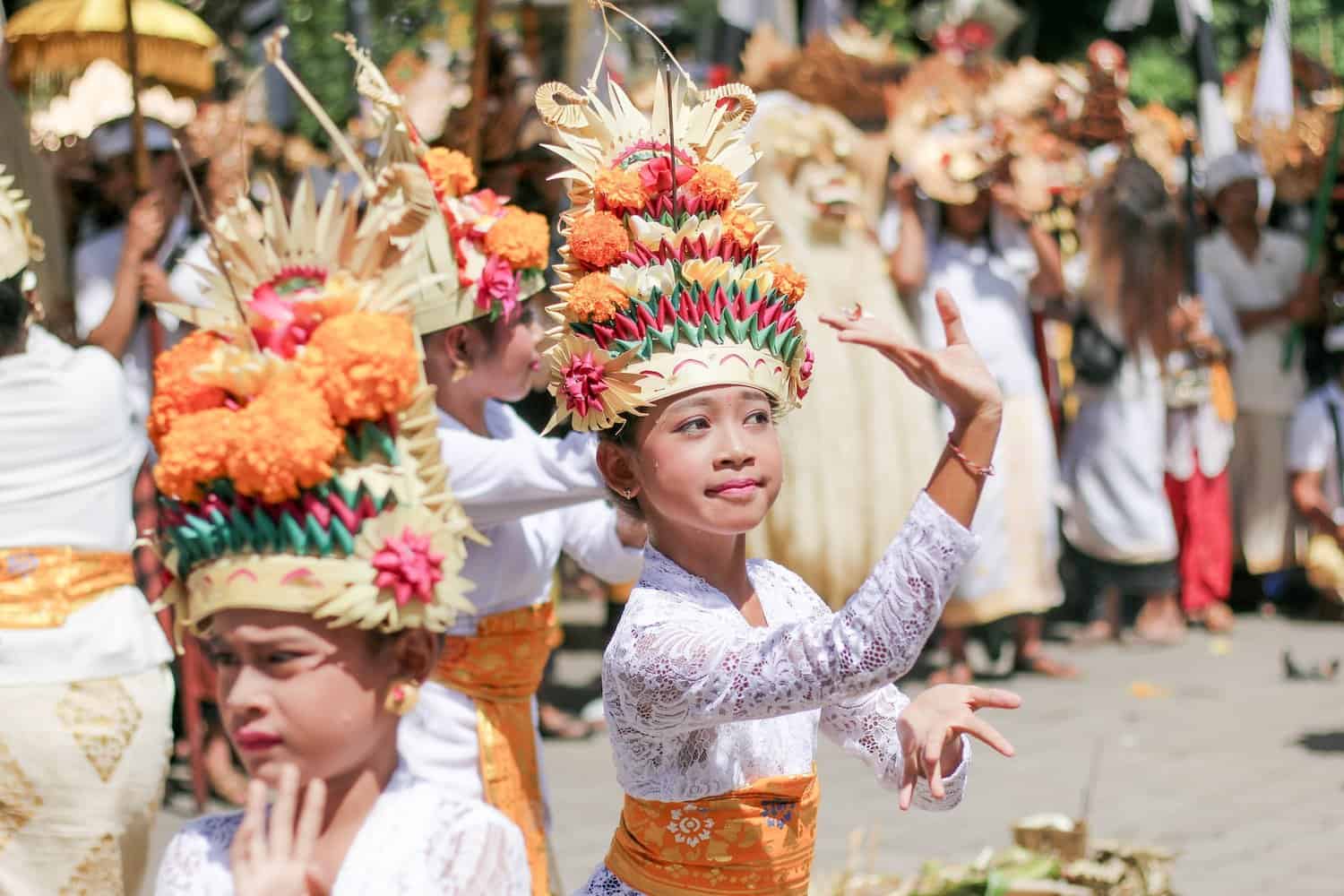
Thailand: Harmony of Tradition and Modernity
Thailand, on the other hand, strikes a harmonious balance between ancient traditions and contemporary vibrancy. The Grand Palace in Bangkok is a testament to the country’s commitment to preserving its vast and rich cultural heritage. Unlike Bali, Thailand’s architecture is grander, with intricate details and golden embellishments that reflect the opulence of its history. You feel like you are exploring the ancient wonders of Thailand, whereas, in Bali, you feel included in some way.
Thailand’s festivals, such as Loy Krathong, showcase a more Westernised and inclusive approach. This festival of lights, celebrated nationwide, involves floating decorative baskets on the water to symbolise letting go of negativity. Thailand’s cultural tapestry is diverse, with each region boasting unique traditions. Songkran, the Thai New Year, is a nationwide water festival marked by lively water fights, highlighting Thai culture’s celebratory and inclusive nature.
Summary: Bali offers an intimate, spiritually charged experience with daily rituals. At the same time, Thailand provides a dynamic blend of tradition and modernity, grandeur and opulence in their culture and traditions.
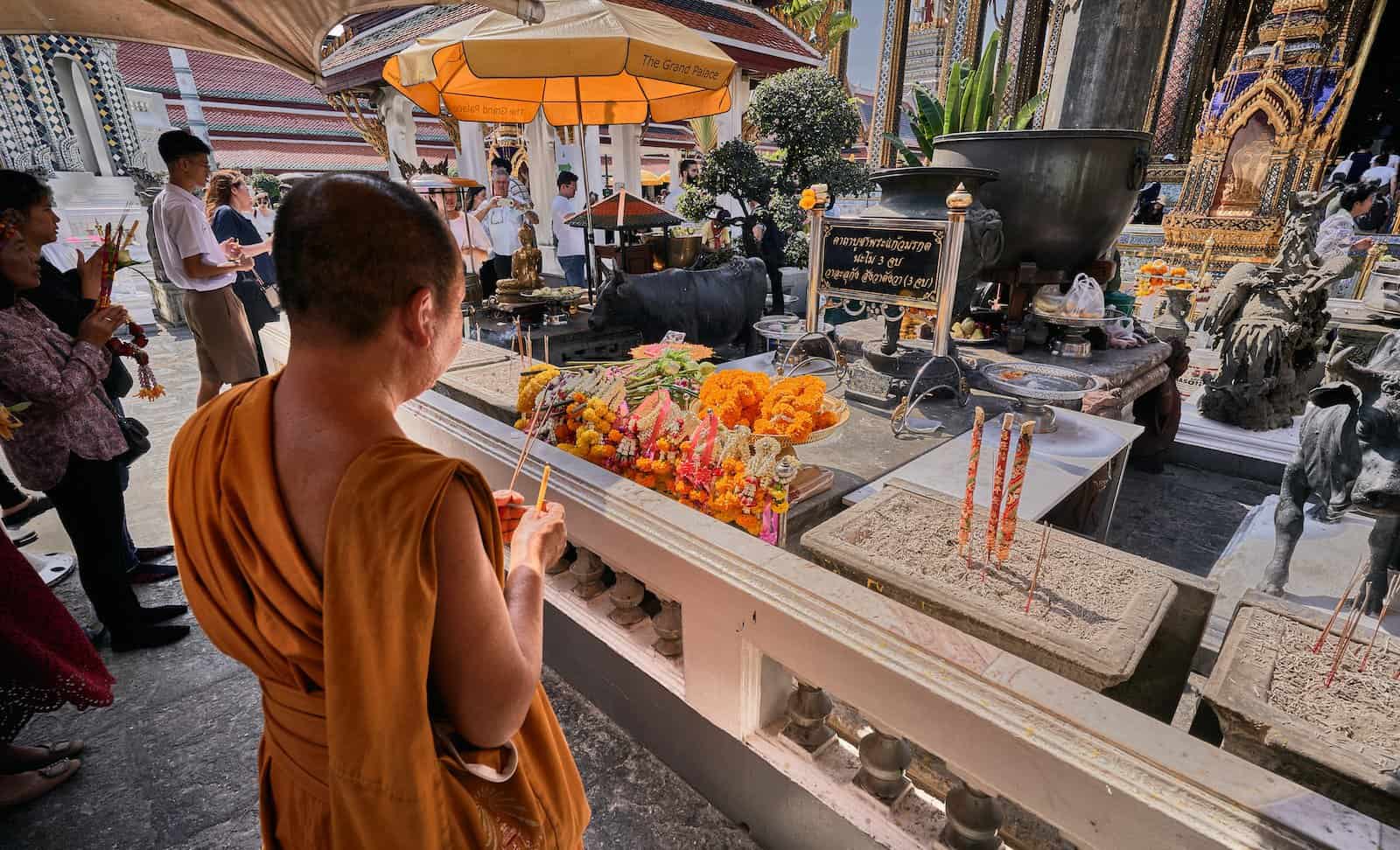
Bali vs Thailand: Architectural Wonders:
Bali’s Local Temples vs Thailand’s Grandeur
Bali: Artistic Finesse in Temples
Bali’s architectural treasures go beyond the well-known Tanah Lot, a mystical sea temple perched on a rocky outcrop featuring traditional tiered pagoda-style architecture and dedicated to the Balinese sea gods, and Besakih, the sprawling “Mother Temple of Bali” nestled on the slopes of Mount Agung with 23 separate temples representing different levels of Balinese Hindu cosmology. These iconic sites offer a glimpse into Bali’s rich historical allure.
The intricately carved Goa Gajah, or Elephant Cave, further unveils ancient carvings dating back to the 11th century, and the purpose of its construction remains mysterious. The Tirta Empul water temple complex, built around a natural spring, showcases Bali’s commitment to artistry and spiritual significance with elegant stone structures and purification pools.
Tirta Empul serves as a cultural landmark for Hindu purification rituals, inviting visitors to partake in the cleansing process. These architectural marvels with a unique history stand as cultural landmarks, inviting exploration into Bali’s distinctive architectural and spiritual heritage.
The construction of these temples reflects a mastery of craftsmanship and a profound connection between art, culture, and spirituality in Balinese history.
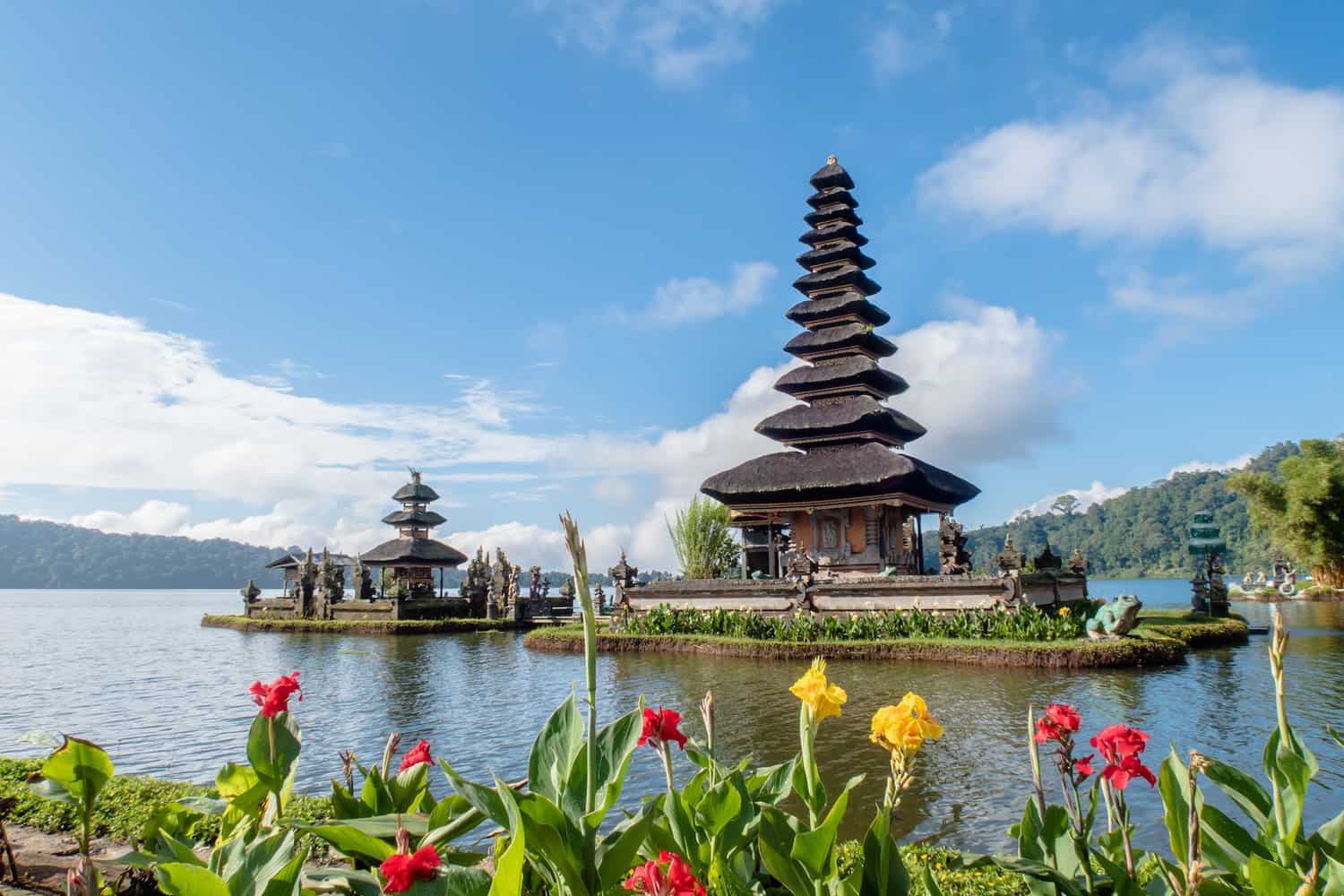
Thailand: Grand Palace Extravaganza and More
The Grand Palace in Bangkok, a masterpiece of Thai architecture, stands as a majestic symbol of the nation’s grandeur. Its intricate detailing, vibrant colours, and iconic structures like Wat Arun contribute to Thailand’s architectural crown. Beyond the capital, Thailand’s architectural diversity unfolds, showcasing a spectrum of stunning temples.
The dazzling White Temple, Wat Rong Khun in Chiang Rai, is a contemporary marvel, contrasting traditional designs with intricate mirror detailing. Its construction, initiated by artist Chalermchai Kositpipat in 1997, carries unique symbolism, blending Buddhist teachings with modern artistic expression.
Wat Pho, adjacent to the Grand Palace, adds to Thailand’s architectural splendour with the iconic Reclining Buddha and intricate murals. Established in the 16th century, Wat Pho is a significant religious site and a centre for traditional Thai medicine and massage.
Each temple in Thailand contributes to the nation’s rich artistic heritage, boasting vibrant colours and diverse architectural features. These temples’ historical narratives, cultural significance, and artistic brilliance collectively showcase the depth of Thailand’s architectural legacy.
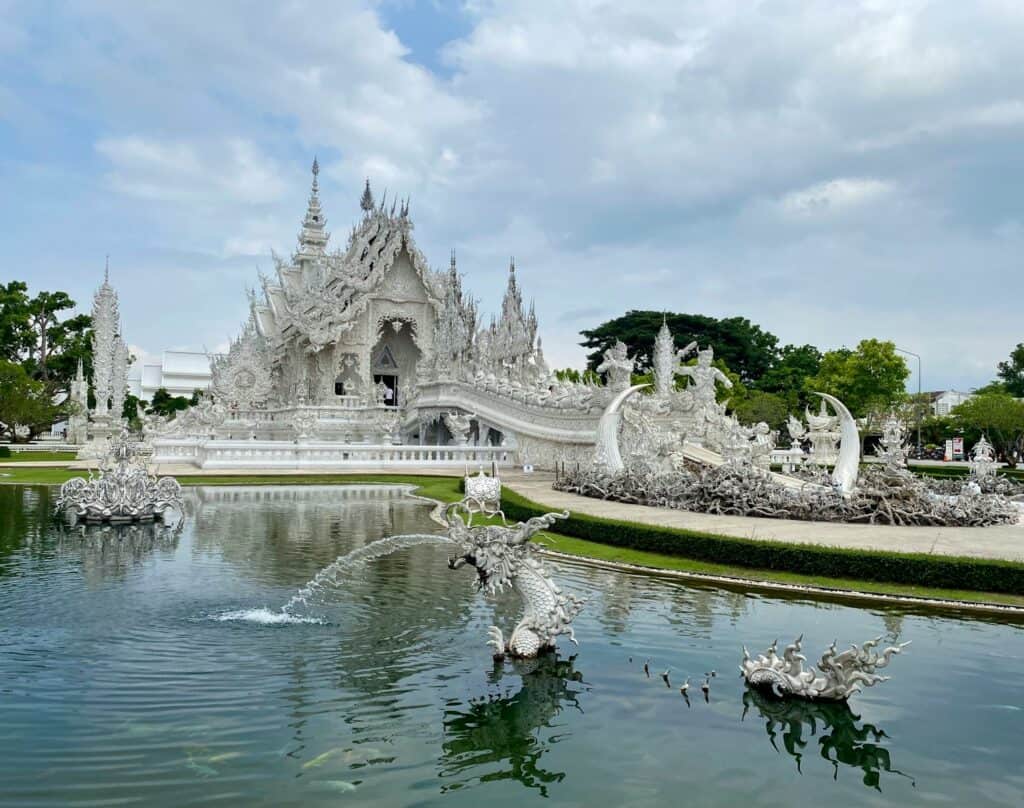
Summary: Balinese temples, such as Tanah Lot and Besakih, feature traditional tiered pagoda-style structures, blending with nature. Thai temples, like the Grand Palace and Wat Rong Khun, showcase diverse designs from historical grandeur to contemporary innovation, emphasising vibrant colours. Both reflect deep spiritual reverence, with Balinese architecture harmonising with nature and Thai temples presenting a dynamic blend of tradition and artistic expression.
Bali vs Thailand: Wellness and Retreats
Bali’s Yoga Sanctuaries vs Thailand’s Meditation Havens
Bali: Global Hub for Yoga Enthusiasts
Bali, renowned worldwide as a haven for wellness seekers, is a global hub for yoga enthusiasts. Ubud, the island’s cultural heart, is synonymous with holistic well-being. Here, amidst lush landscapes, you’ll find acclaimed yoga retreats such as the Yoga Barn and Radiantly Alive.
These sanctuaries offer expert-led yoga sessions and a serene escape into Bali’s natural beauty. With its tranquil surroundings, gentle rice terraces, and spiritual ambience, Ubud creates an ideal backdrop for those seeking rejuvenation through yoga.
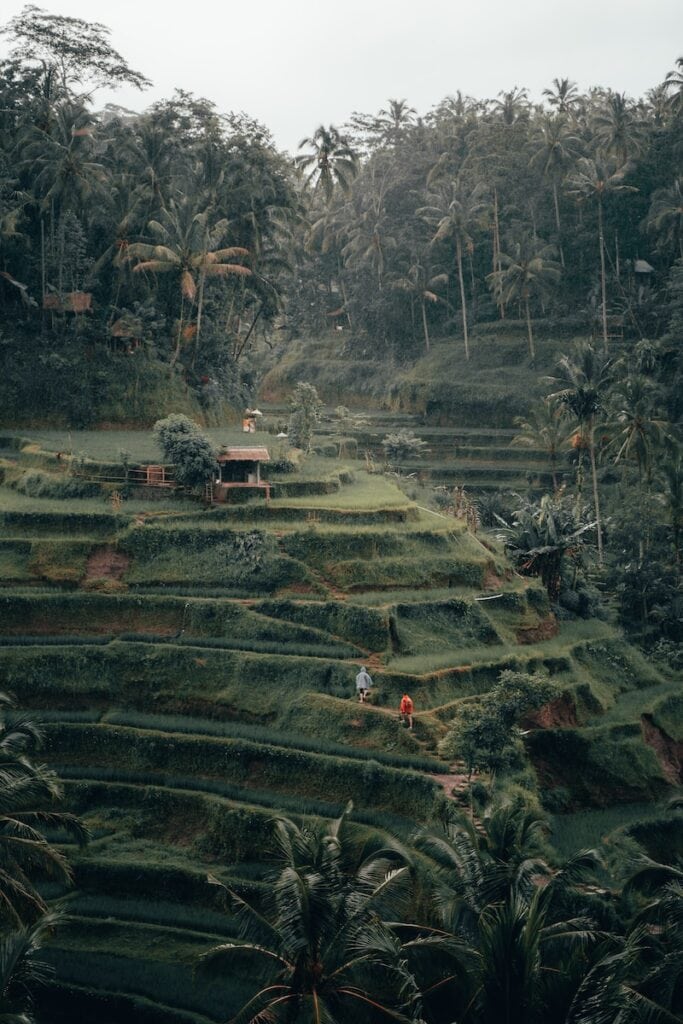
Thailand: Diverse Meditation Centers
Thailand, equally committed to fostering wellness, boasts diverse meditation retreats, notably in the cultural hub of Chiang Mai and the coastal paradise of Phuket.
In Chiang Mai, mountain meditation centres offer a serene escape, immersing participants in mindfulness amidst nature’s tranquillity. Meanwhile, along the enchanting beaches of Phuket, meditation havens provide a different yet equally serene experience. These retreats cater to various meditation practices, from traditional mindfulness to specialised techniques. They offer participants diverse options to explore their inner selves.
Thailand’s wellness landscape harmoniously combines the ancient meditation practice with the country’s breathtaking natural settings, creating inner peace and self-discovery havens. Whether seeking the spiritual tranquillity of Chiang Mai’s hills or the coastal serenity of Phuket, Thailand offers a myriad of choices for those embarking on a meditative journey.
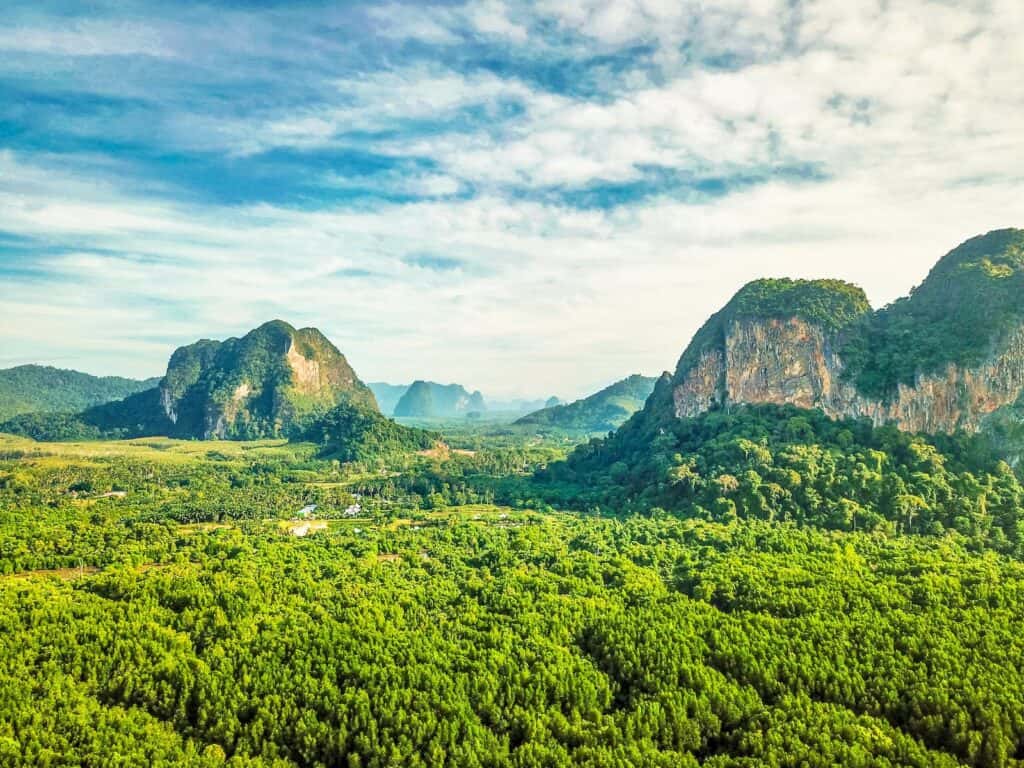
Bali vs Thailand History & Colonial Influences
Bali: Cultural Resilience Amidst History
Bali’s history is marked by cultural resilience and a unique blend of Hindu traditions. The island has faced periods of colonisation, notably by the Dutch in the 19th century, yet managed to preserve its distinct cultural identity. The Balinese people’s resistance against cultural assimilation has resulted in a harmonious fusion of Hindu beliefs with indigenous customs. The impact of colonial influences is visible in architecture and art, but Bali has maintained a strong sense of autonomy.
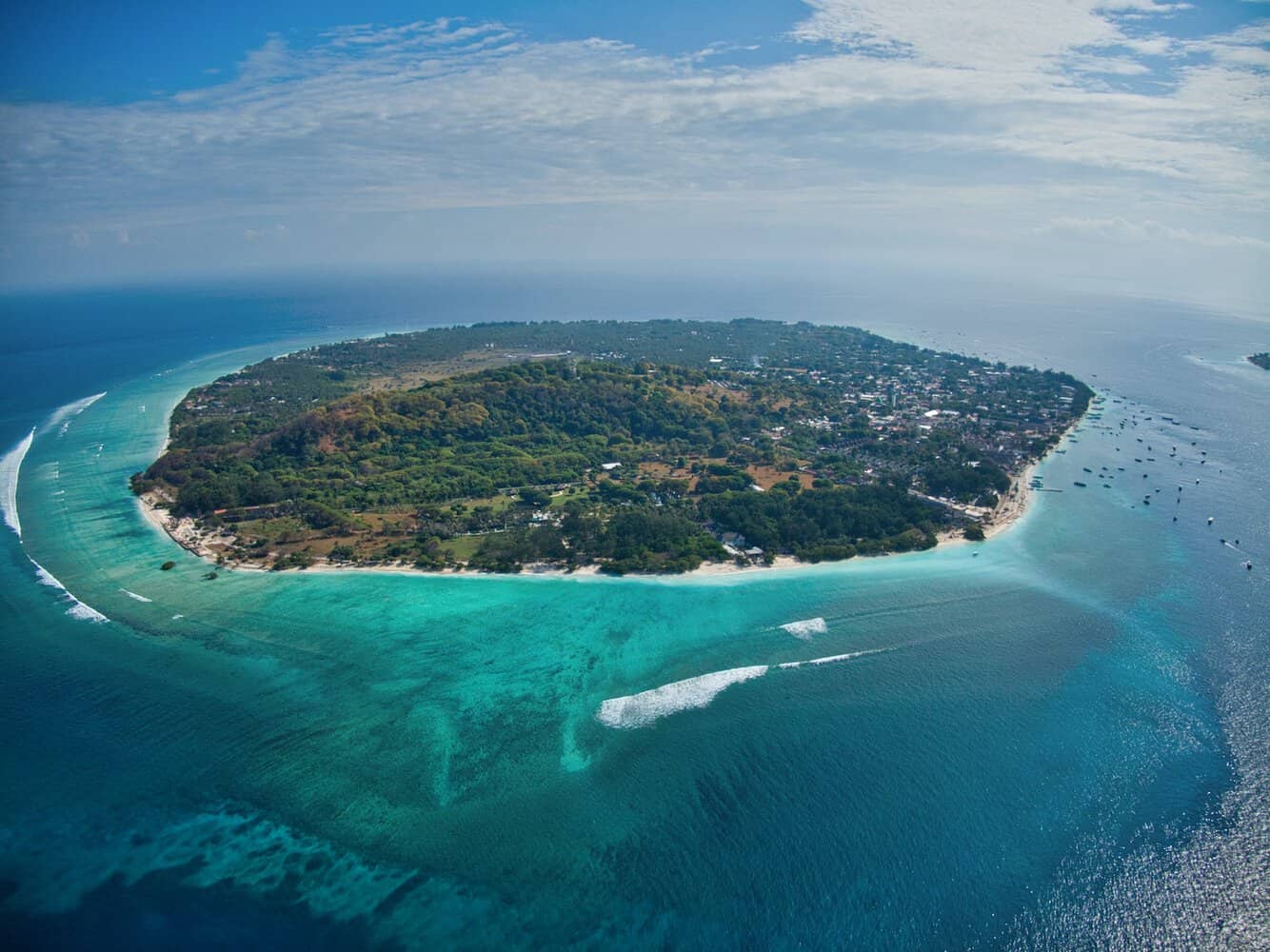
Thailand: A History of Independence
Thailand, formerly known as Siam, boasts a rich history of independence, having never been colonised by Western powers. The country’s strategic location and diplomatic prowess allowed it to navigate the colonial era unscathed. The influences on Thai culture are predominantly homegrown, with Theravada Buddhism playing a central role. This historical autonomy has significantly shaped Thailand’s unique cultural tapestry, which is evident in its language, art, and traditional practices.
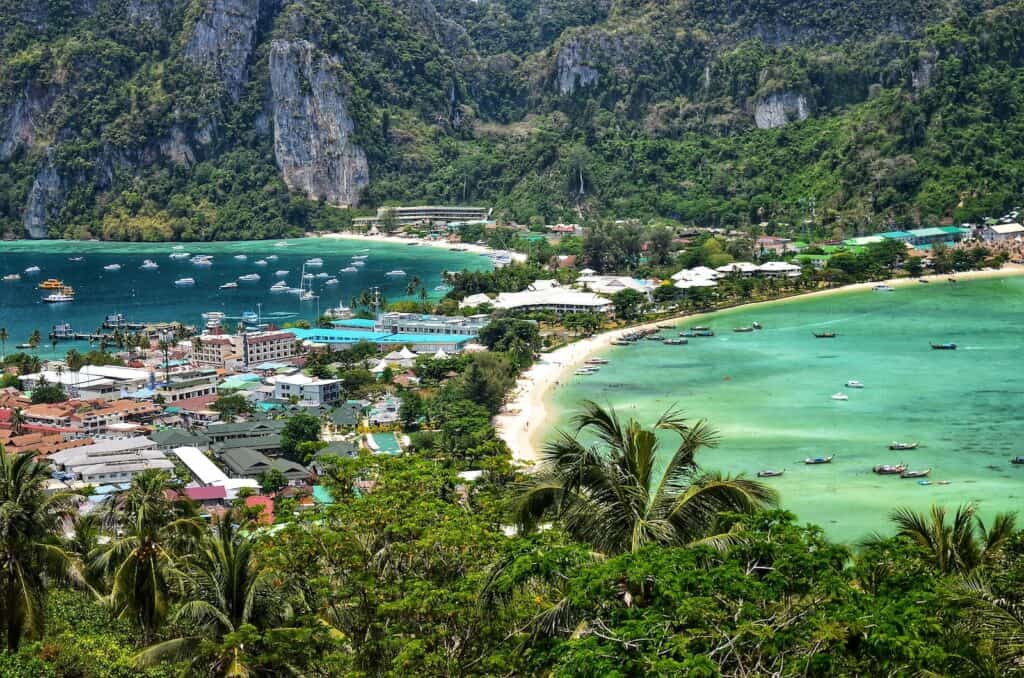
Bali vs Thailand: The Conclusion
In conclusion, choosing between Bali vs Thailand for your next travel adventure depends on your preferences and what you seek in a destination.
Bali beckons with its spiritual ambience, raw natural beauty, and serene pace of life, making it an ideal choice for those who are seeking a tranquil retreat amidst cultural richness. (Given you stay out of the tourist trsps and head more into the lesser known areas)
On the other hand, Thailand boasts a diverse tapestry of experiences, from bustling urban landscapes and rich historical sites to pristine beaches and vibrant street life. The Land of Smiles is a melting pot of traditions, flavours, and activities, promising an immersive journey for those inclined towards dynamic exploration.
Whether you find yourself drawn to Bali’s spiritual haven or enticed by the multifaceted charm of Thailand, both destinations offer unique and captivating experiences that leave an indelible mark on your travel memories.
The choice ultimately lies in your preferences and the adventure you envision. However, I know both will provide you with an unforgettable experience!
- Which Countries Best Represent Our 5 Senses? – Beautiful, & Sensual Destinations

- The Best Sustainable Eco-Tourism Places to Stay in Mexico 2024 – Beautiful & Unique Stays

- Can Solo Travellers Safely Explore India? An Ultimate Guide!

- How To Plan an Epic Budget-Friendly Trip to Southeast Asia

- Sustainable Tourism Options in Mexico – An Implementation of Hope

- Exploring the Impact of Tourism on Culture: A Global Perspective


